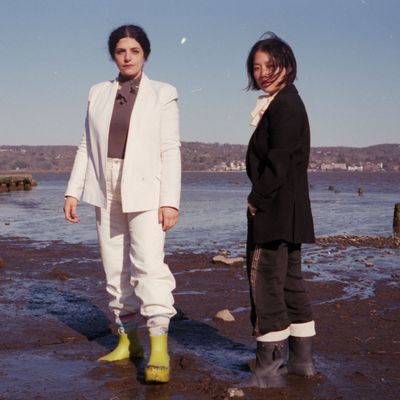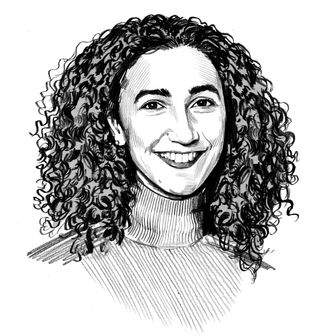
When was the last time you had a positive conversation about the environment? Probably not in a while. The topic tends to evoke feelings of doom and gloom. But a new show called All of the Above takes a more optimistic approach.
“We’re trying to make sustainability fun and sexy,” says Sophia Li, a multimedia journalist and climate activist who co-hosts the show with Céline Semaan, the founder of Slow Factory, a sustainable-fashion and education institute. Li describes All of the Above as “if Patriot Act married Cosmos” in the sense that each episode is educational and centers around answering a single question.
In keeping with the show’s theme, you can create change simply by watching it. All of the Above has partnered with Ecosia, a search engine that donates its ad-revenue profits to reforestation efforts. The first full episode, which launches today after the pilot’s debut last week, will lead to the planting of 1,000 trees in a reforestation project, and 1,000 trees will be planted for each episode after that.
We spoke to the hosts of All of the Above about their mission.
How did this show come about?
Semaan: Last year, we were sitting at my kitchen table talking about how people think they can save the world by going 100 percent vegan or stop buying fast fashion or stop buying fashion altogether. And we were like, But it’s not one or the other; it’s all of the above! So that’s where the name came from and the desire to bridge the gap between this binary of yes vs. no.
How would you describe it?
Li: We call it “Mother Nature’s first talk show.” We’re really centering Mother Nature and giving her the microphone. We wanted to cut through all the noise of what’s happening in the sustainability space. With Earth Month, Earth Day, etc., you’ll see these tactics where companies will be like, “We’re supporting the earth, we’re planting trees,” but they’re promoting consumerism at the end of the day. Also when we talk about the climate crisis, we talk about it from a place of fear and scarcity. For example, we’re always saying we don’t have enough time, we don’t have enough resources. Our goal is to answer the world’s most pressing climate questions. The pilot episode asks, “If climate change is real, why bother?” Episode one is “I’m just one person. What difference can I make?” Later episodes will be “Can veganism save the world?” and “Where does my money go?”
Semaan: I always say sustainability is not something you can buy your way into. It’s not something you can purchase. It’s not a sweater that’s made ethically. It’s a way of life. It’s a culture. And so with these guiding points, this is how we built the show. Of course, the show is also centering climate scientists and climate activists. It’s centering frontline communities. The more you work with [these people], the more you understand that this doom and gloom is actually a privilege, and you cannot just act as though we are constantly afraid to do anything.
You filmed during the pandemic. Did the events of the past year shape the show at all?
Semaan: I think the pandemic was a very important rehearsal globally about what is to be expected when we talk about climate catastrophes or climate change becoming more and more real. It is completely related to climate. This is one of the first climate consequences that we are facing because of the lack of biodiversity. This notion of environmentalism and social justice being two sides of the same coin, which is something that Slow Factory has advocated for close to ten years, is now reaching the mainstream.
Li: I’m sure you remember everyone was saying, “Nature is healing, humans are the virus.” But humans are not the virus because Indigenous communities have been living in equilibrium with Mother Nature for thousands of years. It’s just that capitalism, consumerism, imperialism, colonialism — what we understand as our normal society — those are the viruses.
After the year we’ve had, I think people crave optimism. So this show comes at the right moment.
Semaan: Solutions exist — not in the hundreds but literally in the thousands. But because we don’t report on it, we are faced with ignorance because we don’t know what to do. We think, I’m going to recycle, I’m going to reuse. These are two options, but we explore at length other solutions from an individual perspective, from a collective perspective, from a governmental perspective, from a cultural perspective. It’s this big spectrum that we look into. So yes, it’s a hopeful feeling because there’s so much we can do.
Li: I think as the world starts opening back up, we’re really fast to forget all the lessons that we learned during the past year, one of them being overconsumption and our relationship with Mother Nature. I get it. We’re so excited, I’m so excited. But we can’t just go back to the way we were functioning because obviously that didn’t work. This show is like, Let’s not forget these lessons. Let’s learn from them and move forward instead of crossing out 2020 from our memory banks.
This interview has been edited and condensed. You can watch All of the Above here and here.


